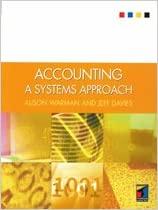Answered step by step
Verified Expert Solution
Question
1 Approved Answer
2. Marginal analysis and profit maximization Suppose Beth gives haircuts on Saturdays to make extra money. She is the only person in town cutting hair
2. Marginal analysis and profit maximization
Suppose Beth gives haircuts on Saturdays to make extra money. She is the only person in town cutting hair on Saturdays and therefore has some market power. Assume that she does not incur fixed costs, and the only significant variable cost to Beth is her time. As she gives more haircuts, Beth must increasingly forgo other valuable Saturday activities. For example, if she gives one haircut, she forgoes reading the paper after breakfast. If she gives two haircuts, she gives up reading the paper and sleeping an extra half-hour.
Beth's clients are a varied group willing to pay between $20.00 and $30.00 for a haircut. Assume that Beth cannot price discriminate, i.e., charge different clients different prices. If Beth charges $30.00 per haircut, she will have one client per week; if she charges $27.50, she will have two; if she charges $25.00, three, and so forth. The following table contains data on the revenues and costs of Beth's haircut business as a function of her pricequantity choice. (The costs are based on the value of Beth's alternative activities, in dollar terms. For example, the total cost of the first haircut is $5the value Beth places on reading the newspaper after breakfast.)
Fill in the missing cells of the table and then use them to answer the questions that follow.
Output
Price
Total Revenue
Marginal Revenue
Total Cost
Marginal Cost
Profit
(Haircuts per week)
(Dollars per haircut)
(Dollars per week)
(Dollars per haircut)
(Dollars per week)
(Dollars per haircut)
(Dollars per week)
0 0 0 0
30.00 5.00
1 30.00 30.00 5.00 25.00
25.00 5.00
2 27.50 55.00 10.00 45.00
20.00 10.00
3 25.00 75.00 20.00 55.00
4 22.50 40.00
10.00 30.00
5 20.00 100.00 70.00 30.00
On the following graph, use the blue points (circle symbol) to plot Beth's total revenue curve, use the orange points (square symbol) to plot her total cost curve, and use the purple points (diamond symbol) to plot her profit curve. Be sure to graph from left to right, starting with zero haircuts and ending with five. Line segments will automatically connect the points.
Total Revenue
Total Cost
Profit
0
1
2
3
4
5
100
80
60
40
20
0
TOTAL REVENUE, TOTAL COST, AND PROFIT (Dollars per week)
QUANTITY OF OUTPUT (Haircuts per week)
On the following graph, use the blue points (circle symbol) to plot her marginal revenue (MR) curve, and then use the orange points (square symbol) to plot Beth's marginal cost (MC) curve for the first five haircuts. Be sure to plot from left to right and to plot between integers. For example, if Beth's marginal cost of increasing her production from one haircut to two haircuts is x, then you would plot a point at (1.5, x). Line segments will automatically connect the points.
Marginal Revenue
Marginal Cost
0
1
2
3
4
5
30
25
20
15
10
5
0
PRICE AND COST (Dollars per haircut)
QUANTITY OF OUTPUT (Haircuts per week)
Beth maximizes her profit by serving per week and charging per haircut.
If Beth gave more haircuts than her optimal quantity of haircuts, which of the following statements would be true? Check all that apply.
Beth's marginal revenue would be less than her marginal cost.
Beth's profit (total revenue minus total cost) would decline.
Step by Step Solution
There are 3 Steps involved in it
Step: 1

Get Instant Access to Expert-Tailored Solutions
See step-by-step solutions with expert insights and AI powered tools for academic success
Step: 2

Step: 3

Ace Your Homework with AI
Get the answers you need in no time with our AI-driven, step-by-step assistance
Get Started


